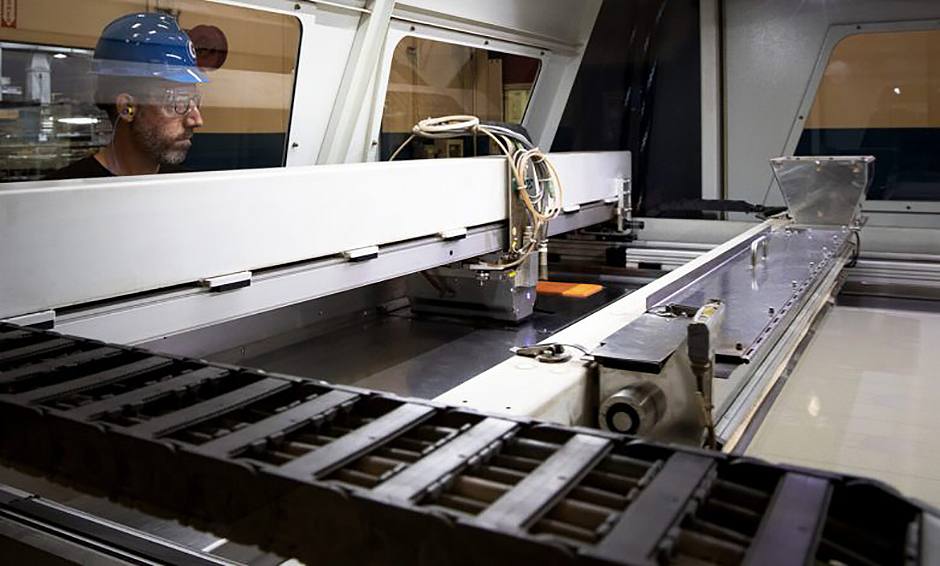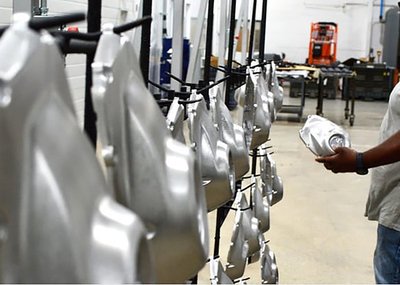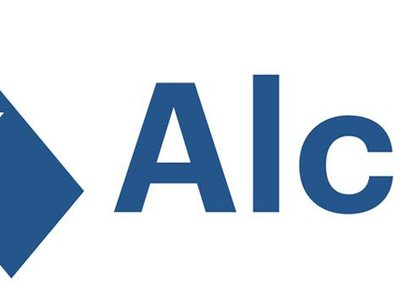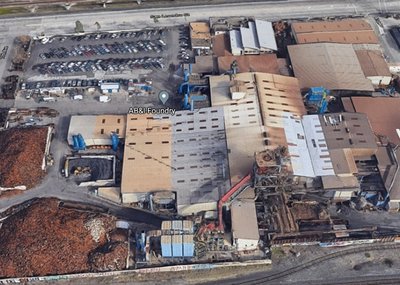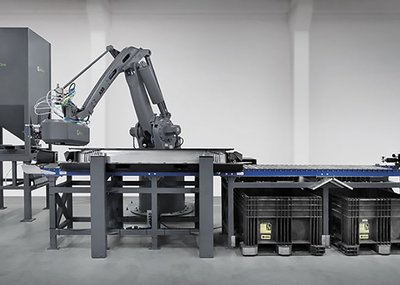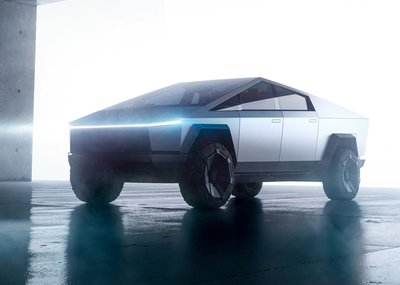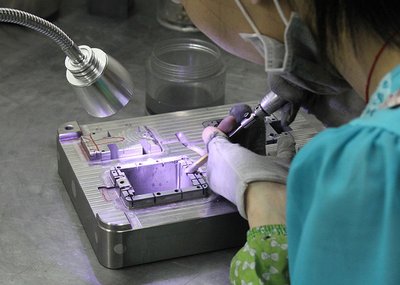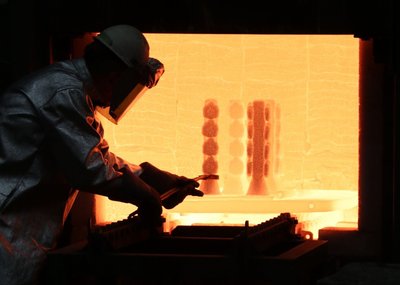The process of manufacturing bearing housings, valve bodies and other complex cored products has traditionally required the assembly of multiple cores. Grede, a leading foundry with 10 facilities across America and 3,800 team members has now internalized sand binder jetting technology from ExOne (part of the Desktop Metal group of companies) and using it to make complex sand cores in a more efficient manner.
What was once a lengthy process requiring multiple steps and manual labor can now be significantly shortened. “A bearing housing is one of three major sections of a turbocharger, which is typically used to increase horsepower,” Steve Sechrist, Vice President of Sales at Grede, explained in a lengthy post on the company’s website.
“The function of a turbocharger is to take the waste exhaust gas and use it to generate more energy. The bearing housing is the middle section that contains a shaft with a turbine wheel on one end and an impeller wheel on the other. The hot gas turns the turbine wheel, which in turn drives the impeller, pulling forced outside air into the engine.”
Because they are not dealing with the highest temperature exhaust gasses that turbine housings would handle, bearing housings are typically manufactured from grey iron. One of the common applications for bearing housings are commercial vehicle engines and, according to Senior Accounts Manager Jerry Smith, Grede is the largest producer of commercial vehicle bearing housings with variable geometry in the United States, and potentially in all of North America. “Our investment in 3D printing machines to produce these housings, as well as valve bodies and other highly complex cored products, provides flexibility and positions Grede well in the market,” Smith said.
Where other foundries have typically outsourced 3D core printing to third parties, Grede has been on the leading edge of the recent trend for foundries looking to modernize their capabilities by bringing additive manufacturing in-house.
“Bringing 3D printing into our internal operations has revitalized our position in the industrial market space,” added Sechrist. “This is especially true when it comes to products like valve bodies with complicated internal passageways that involve assembling four, five, six or even 10 cores together. Being able to shorten our casting process through additive manufacturing has put Grede a few years ahead of the curve. Where other foundries are just now investing in 3D printing technology, we’ve already been there for several years.”
Before additive manufacturing, making bearing housings, valve bodies and other cored products with complex geometry was a manual process. Multiple cores were produced and assembled by hand for these complex geometries. The process required time for gluing and assembly.
“The conventional process for core making with complex geometry is very labor intensive, requiring multiple core machines and assembly of the various cores to make the required core assembly for the molding process Today, one of the innovative uses of 3D printing at Grede is letting a machine do all that intricate work. “Advancements in 3D printing allow us to create intricate cores in one process and with an incredibly high degree of precision and accuracy,” Smith explained. “With additive manufacturing, the manual gluing and assembly is removed.”
The benefits of using 3D printing to create bearing housings, as well as a wide variety of products requiring complex cores, are fairly straightforward, starting with the ExOne binder jetting systems running 24/7. Additional benefits include the ability to create highly cored, intricate castings, including hydraulic valves and transmission components can be printed from CAD models without tooling. High volumes of complex cores and assemblies can be produced quickly and accurately and more flexible designs can be accommodated. In addition, immediate design changes can be implemented, while scrap waste is reduced and fewer materials are used. Less human labor is required as the process works as resin micro-droplets are deposited by the machine onto thin layers of sand. Therefore, assembly operations are eliminated entirely.
Using ExOne binder jetting technology also makes the entire process much more environmentally friendly. Not only does some of the iron Grede uses come from scrap metal, but the use of 3D also printing itself creates less scrap. The sand used in the core-making process can be recycled and used again on additional molds and the company’s goal is to reclaim 100 percent of the sand. Printed cores that break down during the casting process and recycled and the resultant material is used as mold sand. It just goes through a conveyor, gets reconstituted and treated again and then becomes part of the sand used for future molds. An additional environmental benefit is that less energy is used with 3D printing than with traditional bearing housing mold production.
Finally, because the 3D printing process does not use heat to create a core, chemical burn-off that occurs with other core-making processes requiring intense heat is eliminated. Finally, 3D printing is also advancing other processes at Grede, enabling the company to enter new markets from automotive to heavy truck and industrial parts, while helping our customers get to market faster with new designs.
Source: www.3dprintingmedia.network

